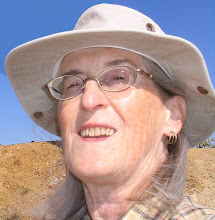Progress on the Clock Vest is slow . . . very slow. I knit on it every morning for an hour while I sip tea. And how much is accomplished during this hour? Two rows. One half hour per row of 212 stitches. Actually it's more like 40 minutes for the front row where all the stitch twisting happens, and then 20 minutes to do the reverse.
This is the process (and I would very much like to know if there is a better way):
1. Knit 19 stitches
2. Turn to Chart A, find correct row, analyze, *memorize and knit, repeat from * as needed
3. Knit 14 stitches.
4. Repeat Step #2 minus the page flipping and analysis.
5. Knit 25-35 (varies by row) stitches.
6. Turn to Chart C, find correct row, analyze, *memorize and knit, repeat from * as needed
7. Repeat Step #5
8. Turn to Chart B, find correct row, analyze, *memorize and knit, repeat from * as needed
9. Knit 14 stitches.
10. Repeat Step #8 minus the page flipping and analysis.
11. Knit 19 stitches
I persevere. And it is getting easier and faster. Not a lot, but I have hopes of raising my production to 4 rows per day. How many total rows? And if we divide by 4, how many days will it take to finish? Nope. Not going there. Too scary.
So far the fit is looking good. I spread the stitches across two circs and had a little try on session. It is neither obscenely large nor obscenely small, just about right. 
 This is the back pattern, which spreads out and grabs more stockinette stitches as you knit upwards. At this point I usually begin chanting -- "a purl behind a knit, a knit in front of a purl, purl five, a knit in front of a knit . . ." On some of the easier rows I can get through the whole thing without having to look back at the chart.
This is the back pattern, which spreads out and grabs more stockinette stitches as you knit upwards. At this point I usually begin chanting -- "a purl behind a knit, a knit in front of a purl, purl five, a knit in front of a knit . . ." On some of the easier rows I can get through the whole thing without having to look back at the chart.
 And these little twisties are on the right front and under the right arm. Each front pattern mirrors the other, and each repeats on the side. You would think after working the pattern once on the front I would remember it a mere 14 stitches further along. Apparently not. I have to check the chart all over again.
And these little twisties are on the right front and under the right arm. Each front pattern mirrors the other, and each repeats on the side. You would think after working the pattern once on the front I would remember it a mere 14 stitches further along. Apparently not. I have to check the chart all over again.
In the goodnews/badnews department: GOOD = the side panels go away once one reaches the armholes; BAD = there is a chart D that merges with chart C at some point to cover the entire back.
But it is a beautiful vest. Well worth the effort. And when it is finished I will be a far more adept knitter of traveling twisted stitches.

























